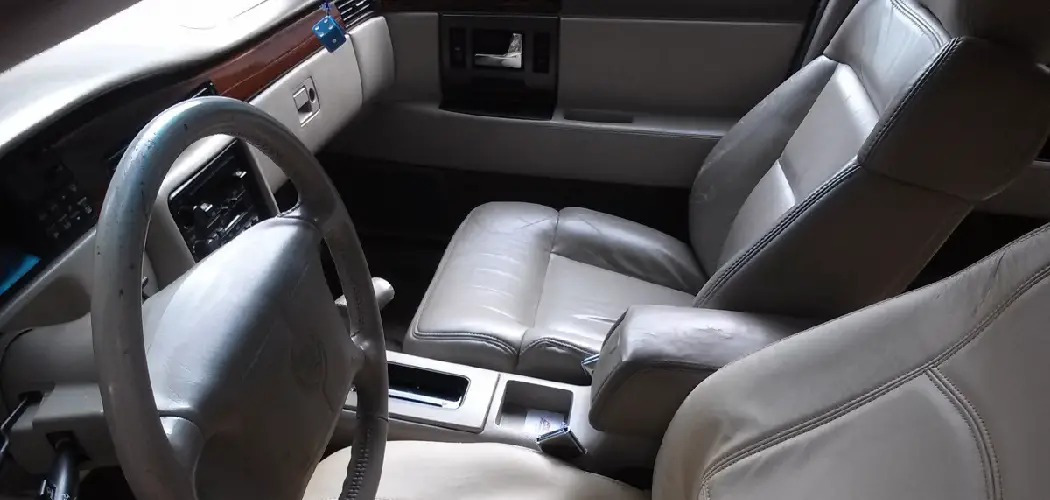Leaving sweat marks on seats is considered rude, unhygienic, and unsightly. Sweat is filled with bacteria; when someone sits in a seat with sweat marks left behind by another person, they could catch germs and illnesses.
In addition, leaving sweat stains on the seats of public places makes them look dirty and unappealing. This reflects poorly on the facility and can turn away potential customers.
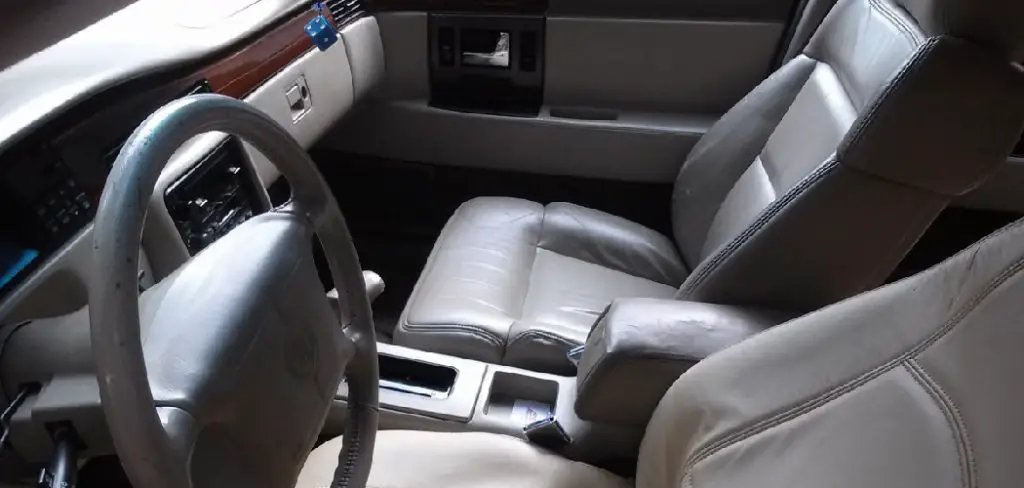
The main advantage of learning to leave sweat marks on seats is improved hygiene for everyone in the area. Sweat can carry bacteria and other microorganisms, which can cause illness if it is left behind on a seat or other surface.
Preventing sweat from leaving marks on seats will help maintain a healthier environment. In this blog post, You will learn in detail how to stop leaving sweat marks on seats.
Step-by-step Instructions for How to Stop Leaving Sweat Marks on Seats
Step 1: Inspect the Seats
Before sitting on the seat, take a minute to inspect areas that are likely to contact your skin or clothing when seated. If you see any sweat marks already present, bring attention to them and move on.
Bring along a towel or other absorbent material that can be placed between you and the seat. This will help absorb any sweat before it has a chance to seep into the upholstery.
Step 2: Use a Sweatband or Headband
If you’re prone to sweating, consider wearing a sweatband or headband. These are designed to absorb sweat from your forehead and face before it has a chance to run down onto the seat. It may also help keep your hair out of your eyes during play.
Step 3: Wear Loose Clothing
Wear loose clothing that won’t stick to your skin when you sweat. This will help keep sweat from being absorbed by the fabric and transferring onto the seat. Apply antiperspirant or deodorant before sitting. This will help reduce sweat on your skin and lessens the chance of it seeping into the upholstery.
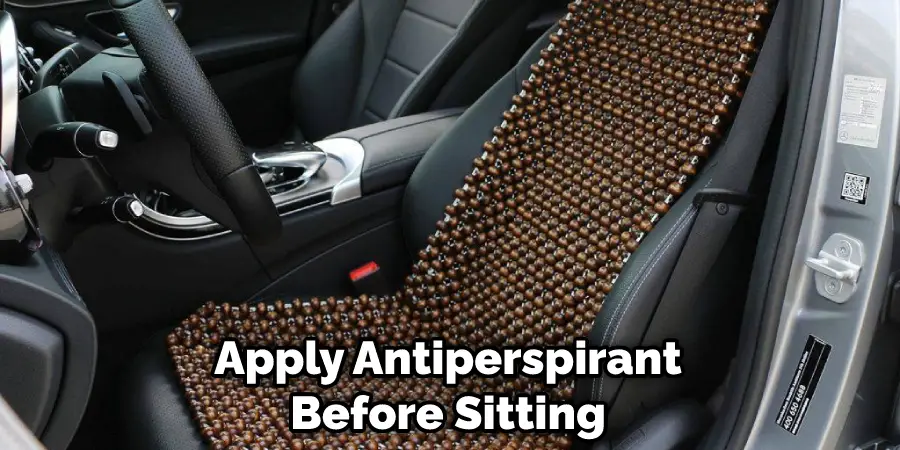
Step 4: Use a Shield
You can buy shields specifically designed to protect seats from sweat. These shields are typically made of vinyl and fit over the seat, preventing any sweat from getting through. Sit up straight and keep your sweat glands away from the seat’s fabric. This will reduce the chance of any sweat seeping into the fabric.
Step 5: Use a Fan or Air Conditioner
If possible, use a fan or air conditioner to reduce the temperature in the room. This will help keep you cool and lessen the chance of sweating on the seat. If you’re going to be sitting for a long time, take breaks to stand up and move around. Moving around helps increase circulation and can help reduce sweat.
Step 6: Change Your Clothes
If you’re sweating profusely, consider changing into a fresh set of clothes before sitting down on the seat. This will help reduce the chance of any sweat seeping through to the upholstery. Clean it up immediately if you notice any sweat on the seat. Use a damp cloth to gently wipe away any sweat before it has a chance to seep into the fabric.
Follow these steps to help keep your seat free from sweat marks. And if you’re still having trouble with sweaty seats, consider investing in a waterproof seat cover.
6 Tips for How to Stop Leaving Sweat Marks on Seats
- Wear breathable fabrics, such as cotton and other natural fibers, to help wick away sweat and keep you cooler during physical activity.
- Make sure to remove your clothing from the seat when you finish using it. This includes anything that has come into contact with the sweat on your skin, like towels or gym clothes.
- Keep an absorbent cloth or towel handy to place on the seat before you sit down. This helps absorb any excess sweat that may have accumulated on your skin beforehand.
- Consider using a personal seat cushion designed for athletes who need extra protection from sweat and moisture when sitting for extended periods of time.
- Make sure your skin is clean and dry before sitting down to help reduce sweat accumulating on the seat.
- Use a deodorant or antiperspirant product that contains aluminum chloride, which helps reduce sweat production.

How Often Should You Apply Antiperspirant/deodorant?
Applying antiperspirant/deodorant frequently is important to prevent sweat from leaving marks on the seats. How often you should reapply will vary depending on the type of antiperspirant/deodorant that you use and how much sweating occurs. Generally, it is best to apply antiperspirant or deodorant every day after showering and again before leaving the house.
If you are prone to excessive sweating and want to prevent sweat marks on seats, it is a good idea to reapply antiperspirant or deodorant multiple times throughout the day.
Additionally, look for an antiperspirant/deodorant that offers extra protection against seat sweat marks. Such products will have a different active ingredient than regular antiperspirants/deodorants and can be effective in preventing sweat from leaving marks.
What Materials or Fabrics Are Most Resistant to Sweat Marks?
Materials that are most resistant to sweat marks should be chosen when selecting furniture or clothes. Synthetic fabrics like polyester and fleece tend to repel moisture better than cotton and other natural fabrics.
Leather is also water-resistant, but it can stain easily when exposed to sweat. Vinyl and plastic covers may offer some protection against sweat stains, but they will not provide any comfort.
Upholstery fabrics designed specifically to resist sweat and odor are available, but they can be expensive and may not fit your needs. If you want to prevent sweat marks on furniture, consider slipcovers or other removable covers that can be washed regularly.
For clothing, breathable fabric choices like linen and bamboo are the best option for keeping sweat stains at bay. Additionally, fabrics with a tight weave or those with moisture-wicking properties can help reduce the occurrence of sweat marks.
How Can You Protect Your Seat From Sweat Damage?
Along with ensuring to keep sweat off your seat in the first place, there are several steps you can take to protect your seat from future sweat damage. One easy way is to use a seat cover or cushion, which will help wick away any moisture and prevent it from seeping into the fabric or upholstery. You can also opt for water-resistant materials like vinyl or leather for ultimate protection.
Another option is to use an antibacterial spray on the seat before sitting down, killing any bacteria that could cause staining and odors. Be sure to test this product on a small area first, as some fabrics may react differently. Finally, you can treat spots as soon as they appear.
Use a clean cloth to dab the area lightly with water and then gently scrub it with mild detergent. Afterward, rinse the area thoroughly and allow it to dry before sitting down again.
How Can You Clean Sweat Marks Off Your Seat?
If you’ve been leaving sweat marks on your seat, don’t worry. It happens to the best of us! Fortunately, it’s easy to clean these up and keep them from occurring in the future. The first step is to remove any excess moisture, which can be done with a towel or cloth. You can then use a soft brush to remove any dirt or debris that may have been left behind.
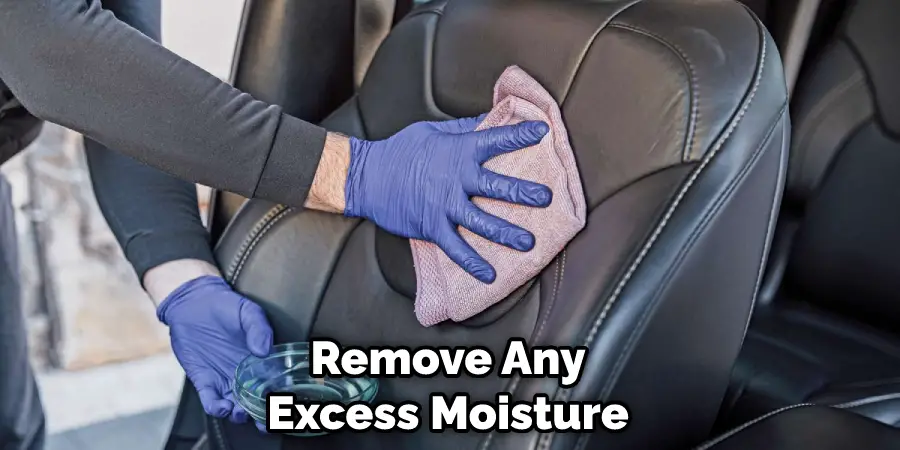
Next, you can create your own cleaning solution by mixing one part water and one part white vinegar in a spray bottle. Spray this mixture onto the area with sweat marks and let it sit for about 10 minutes before wiping it off with a clean cloth.
For extra protection, you can spray a fabric protector onto the seat after cleaning. This will help prevent new sweat marks from forming and keep it looking good for longer.
What Other Tips Are There for Avoiding Sweat Marks on Seats?
Aside from using a towel, there are some other tips to help prevent sweat marks on seats. Firstly, try to find seating that’s made of materials that absorb moisture, such as fabric or leather. This will help avoid excessive sweat build-up on the surface and make it easier to wipe off any remaining moisture.
Secondly, try to find ventilated seating if you’re in a public place. This will make it easier for sweat to evaporate and decrease the amount of moisture left behind on the seat. Finally, if possible, wear lightweight clothing made from breathable and absorbent materials. This will reduce the amount of perspiration and help keep your skin dry while you’re sitting on a seat.
Remember, although it may be difficult to avoid leaving sweat marks entirely, there are several ways to reduce your chances of doing so and keep your seating clean and dry. You can help prevent unsightly sweat marks on any surface with a little effort and diligence.
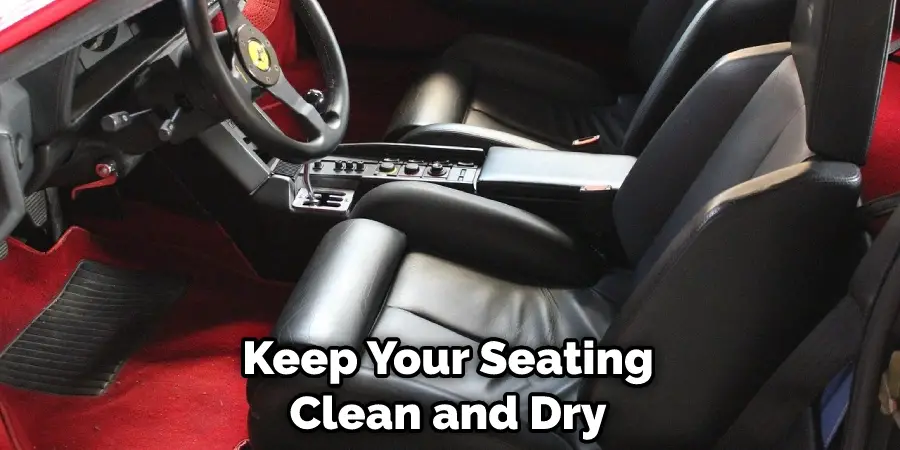
Conclusion
The overall conclusion is that leaving sweat marks on seats can be prevented by taking a few simple steps. Wearing breathable fabrics, using an absorbent paper towel to sit on in hot weather, and applying antiperspirant products to areas prone to sweating are all effective ways of avoiding this common problem.
Additionally, changing positions frequently while sitting and avoiding certain activities that increase sweating can help reduce the chances of leaving sweat marks on seats. Taking these steps will ensure that you and those around you remain comfortable and dry. I hope this article has been beneficial for learning how to stop leaving sweat marks on seats. Make Sure the precautionary measures are followed chronologically.
You Can Check It Out to Fix a Recliner Lever

